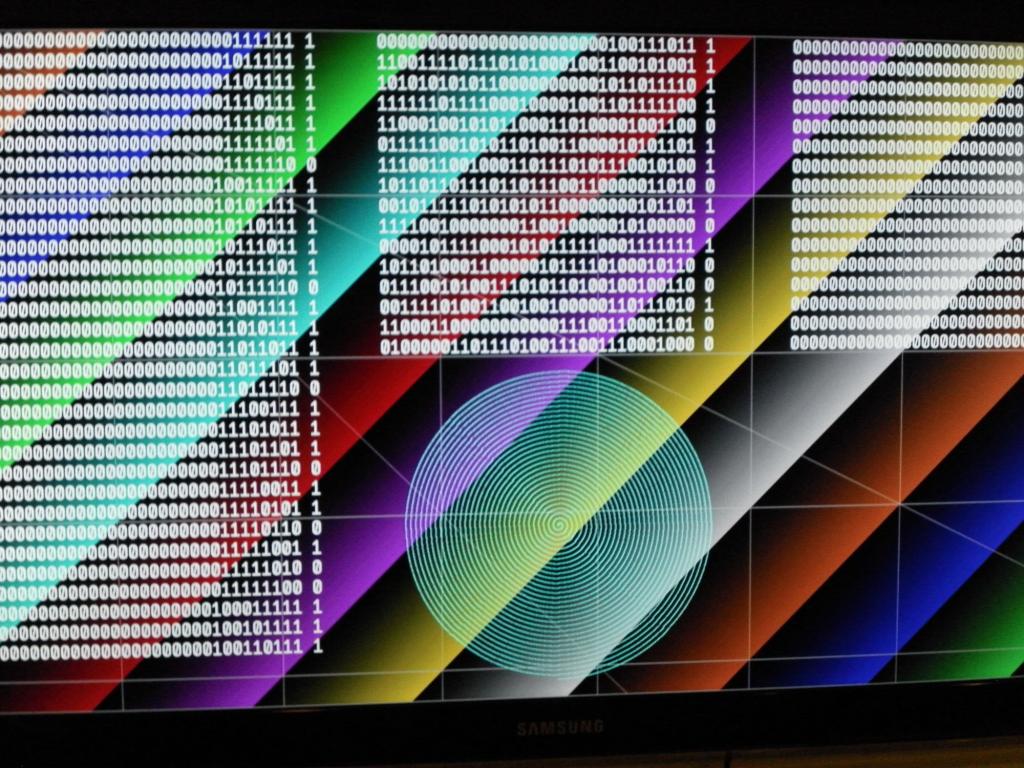Prop2 doing 1080p
 Roy Eltham
Posts: 3,000
Roy Eltham
Posts: 3,000
Also shows some interesting data from some new instructions, like the spiral is using the cordic instructions.

I attached a zip of a higher resolution version of the image so you can see it better.
I attached a zip of a higher resolution version of the image so you can see it better.
zip

512K



Comments
I'm assuming that this is VGA!?
I haven't seen an HDTV that didn't have a VGA connector, but haven't looked real hard...
Panasonic Viera TX-L19X10BW.
I think you are right, it's described as "HD ready". It has VGA input.
Older "HD Ready" sets often had DVI inputs not HDMI. There are adaptors on the market that will convert the connection from VGA to DVI.
Jim
One of my TVs has a component input using the VGA connector!
Apparently, there's some quasi-standard where some of the unuses VGA pins are used for component video...
Ok, that's definitely an HDTV. BTW: "HD ready" just means that it doesn't include an over-the-air HDTV tuner. A lot of TVs from a few years ago were like that. They're rare now as the government requires new TVs (except maybe tiny ones) to have tuners...
Not only are component signals sometimes stuffed into a VGA connector, there are TV signals too. Matrox did it, and may still do it, offering a chroma and luma signal on the VGA. Used to have a cable for a older G400 series card that I could use for S-video display.
Deffo read the manual. Anything might be possible.
@Leon: I've a Viera series set here, and it's got component, no VGA, multiple HDMI inputs.
Regarding HD Ready - I think some of the older sets that have HDMI may not have a working HDCP implementation (I think no set should have HDCP, but that's another discussion entirely)
Yeah, "HD Ready" typically means no HD tuner (i.e. like a PC monitor) but some way of providing an "HD" signal to the display. Of course, since "HD Ready" wasn't a specific standard, neither was the input. "HD Ready" displays often had lower specs than modern HDTVs - i.e. only supporting 720p/1080i and having 1024x768 panels.
Most (all?) VGA<->DVI adapters rely on the analog pins of the DVI connector. Of course, that means that if the DVI side doesn't support DVI-A then the adapter doesn't work. VGA<->HDMI adapters are digital, but are more expensive.
That was using the big FPGA board Chiop has for developing the Prop 2. It's like $2500 plus some custom boards parallax made to attach to it. So you can't really have it
Others:
I talked with Chip a bit about HDMI and DVI, and the main problem is that they are digital and to get 1080p would require higher pin signalling rates than will be possible on the Prop2. It may be possible to do lower resolutions over a DVI or HDMI cable (minus the encryption stuff). It's something that one of you folks will have to try.
Thanks for posting Roy. I need to forward this to a few people to pique their interest...
I'm impressed!
Please comment on what uses there are for the sequences of binary numbers with a constant number of 1's,
and any info on how to quickly convert between normal numbers and binary numbers constrained to a constant number of 1's.
If %1111111111111111 == 1 (and %10111111111111111 == 2) then what is %10101010101010101010101010101010 == X?
And the inverse, what is %X == 1048576?
I need a function and its inverse that's quick for large numbers.